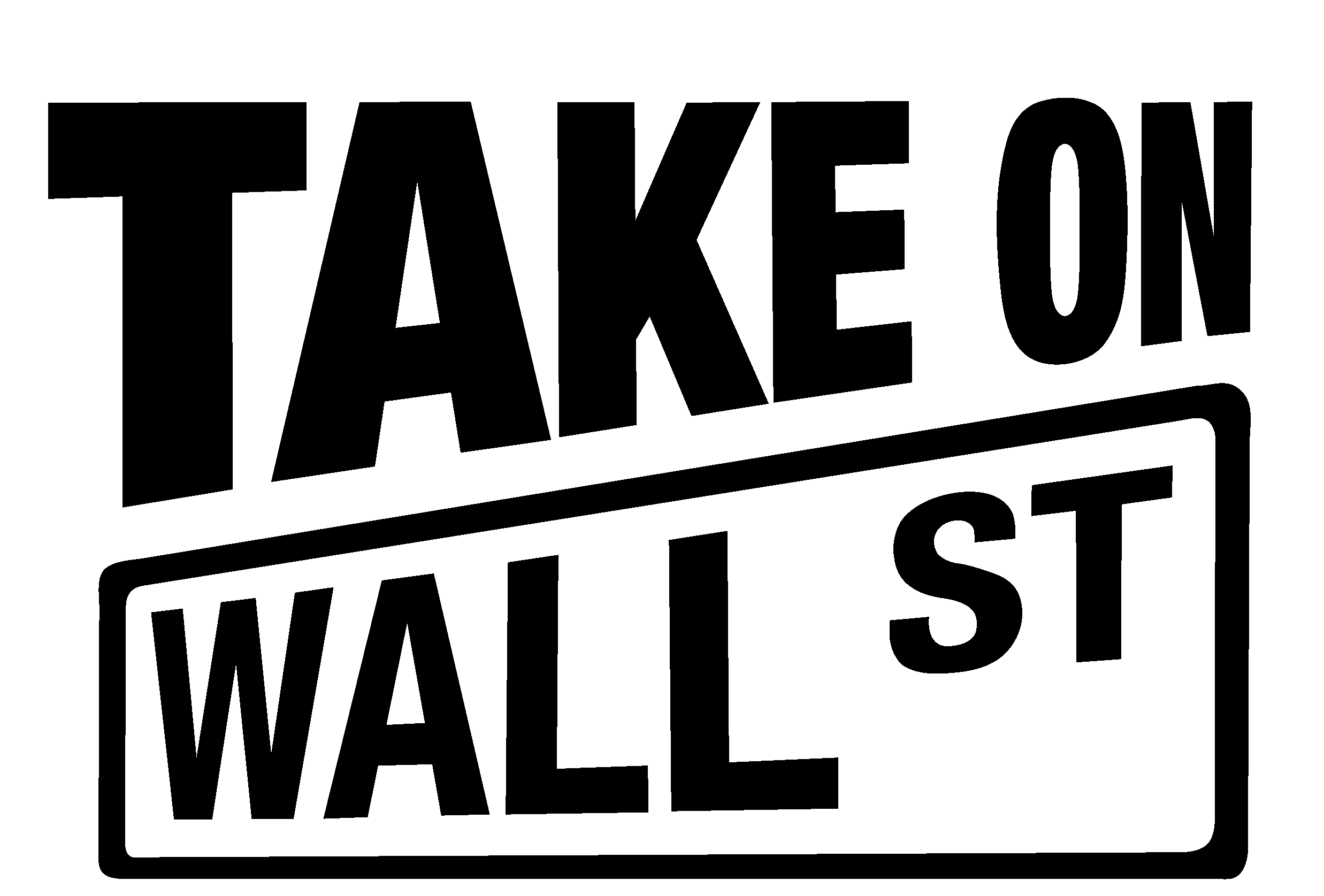CEO Pay
Wall Street executives chasing huge bonuses engaged in reckless and at times criminal behavior that drove our economy off a cliff in 2008, throwing millions of Americans out of their homes and jobs. More than a decade later, excessive executive pay is still a problem on Wall Street and throughout corporate America.

Big banks, private equity funds, and other big corporations offer massive payouts to their top executives, encouraging them to do whatever it takes to hit the short-term jackpot — regardless of the harmful impacts their reckless actions might have on workers and their communities. Considerable academic research shows that extreme CEO-worker pay gaps are also bad for business because they undermine employee morale and lower productivity.
While executives didn’t cause the pandemic crisis as directly as they caused the 2008 crash, they did make the country more vulnerable by driving a corporate model focused on funneling money to top executives instead of investing in their workers and long-term prosperity. When Covid-19 virtually shut down our economy, nearly 40 percent of American families were already on the financial edge, unable to afford a $400 emergency and with no choice but to rely on public assistance.
During the pandemic, these disparities have only grown worse. In 2020, while workers were losing jobs, income, and even their lives, corporate boards moved bonus goalposts to protect CEOs’ massive paychecks. The Paycheck Protection Program that was meant to be a lifeline for small businesses was exploited by major corporations like McDonald’s and luxury hotels like the Chateau Marmont that could have survived the pandemic without public funds. In 2021, with the economy in recovery, corporations spent record sums on stock buybacks to artificially inflate CEO pay, while most U.S. workers lost ground to inflation.
The gap between CEO and average worker pay in 2021 stood at a staggering 324 to 1, according to the AFL-CIO. It hasn’t always been this way. In the 1960s, CEOs made just 20 times more than average workers.
The good news: numerous commonsense proposals for addressing excessive CEO pay and huge CEO-worker pay gaps are gaining momentum. Below are the priority reforms supported by Take on Wall Street.
Tax excessive CEO pay
For several years now, policymakers have been developing proposals to apply graduated corporate tax rate increases based on the size of a company’s CEO-worker pay ratio. These policies encourage large corporations to narrow their divides — by lifting up the bottom and/or bringing down the top of their wage scales. They could also generate significant revenue. One federal bill, the Tax Excessive CEO Pay Act, would raise an estimated $150 billion over 10 years. Such tax increases are already raising revenue in two cities, San Francisco and Portland, Oregon.
Restrict CEO pay-inflating stock buybacks
We have seen significant recent progress in addressing stock buybacks, which artificially inflate CEO pay and siphon resources from worker pay and other productivity-boosting investments. In August 2022, Congress passed a 1 percent excise tax on stock buybacks by large corporations. The Commerce Department also announced that it will give priority to firms that do not engage in stock buybacks in the awarding of new subsidies for semiconductor manufacturing. Policymakers could go further by prohibiting all federal contractors from engaging in buybacks or by banning share repurchases on the open market altogether, as proposed under the Reward Work Act.
Introduce federal contracting standards to narrow pay divides
Much more could be done to push corporate America on a more equitable path through federal contracting standards. Take on Wall Street supports the Patriotic Corporations of America Act, which includes a wide range of pro-worker, pro-environment, pro-racial justice conditions on contractors. These contracting reforms could also be achieved through executive action. There are three measures the federal government could take to make pay more equitable:
- Preferential treatment for corporations with narrow gaps between CEO and worker pay
- Restrictions on stock buybacks
- Requirements that all federal contractors have project labor agreements and remain neutral in union organizing campaigns. Countries with higher unionization rates tend to have more modest CEO pay levels.
Close the carried interest loophole
Under current tax rules, executives of private equity, real estate, and hedge funds pay the capital-gains tax rate on so-called “carried interest” (earnings tied to a percentage of the fund’s profits) — instead of the significantly higher ordinary income tax rate. As a result, wealthy Wall Street fund managers pay a lower tax rate than millions of our country’s teachers, firefighters, and nurses. Senate Finance Committee Chair Ron Wyden has introduced a bill to permanently remove carried interest’s relatively recent re-classification as capital gains income and return to taxing it at the same rate as everyone else’s income, as the Biden administration, Senators Tammy Baldwin, Elizabeth Warren, and others have proposed. Wyden’s bill would also require managers to pay an annual tax on accrued carried interest, generating a total of $63 billion over a decade.
Restrict Wall Street pay
The 2010 Dodd-Frank financial reform law prohibits large financial institutions from granting incentive-based compensation that “encourages inappropriate risks.” But federal regulators have never implemented this provision, despite continued reckless behavior at big Wall Street banks that harms ordinary consumers. They should finally put this law into force with rigorous rules that:
- Ban stock options at Wall Street banks: This form of compensation promises executives all of the benefits of share price increases with none of the risk of share price declines, giving them a huge incentive to take reckless action to boost short-term stock prices.
- Require significant compensation to be deferred for 10 years to pay potential misconduct fines: This would help change the dangerously reckless, individualistic culture on Wall Street by making executives personally responsible for crimes.
- Ban executive hedging of bonus pay: Any effort to reduce inappropriate risk-taking will be ineffective if employees can use hedging strategies to reduce their risk to poor company performance.
End taxpayer subsidies for mega-million-dollar bonuses
A 1993 tax reform created a huge loophole that allowed corporations to deduct unlimited amounts of executive pay off their taxable income — as long as that pay was in stock options or other forms of so-called “performance” pay. In other words, the more corporations paid their CEO, the less they owed in taxes. Subsequent reforms have partially closed this loophole by setting a $1 million deductibility cap on all compensation going to a company’s top 10 executives. But given how many executives in corporate America make more than $1 million in a year, Congress should consider extending this cap to all employees, as proposed in the Stop Subsidizing Multimillion Dollar Corporate Bonuses Act.

Learn More
CEO-Worker Pay Resource Guide, Inequality.org
Executive Paywatch, AFL-CIO
Congress Takes Historic Step to Tax Stock Buybacks, by Natalia Renta, Americans for Financial Reform, August 9, 2022.
Vintage Statute — on the long-delayed Wall Street executive pay restrictions in the Dodd-Frank law, by Bartlett Naylor, Public Citizen, November 20, 2020.
“A Hard-Won Victory on CEO Pay“, by Jim Lardner, Americans for Financial Reform, June 21, 2018.
“10 years after the Great Recession, big banks are still making outrageous profits”, by Sarah Anderson and Porter McConnell, The Hill, April 30, 2018.
